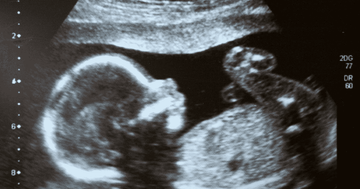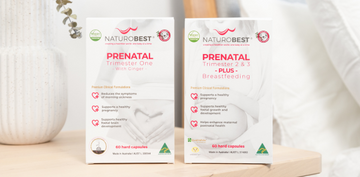
Positive pregnancy test results are one of the most thrilling experiences a woman can go through. In addition to arming yourself with information about what vitamins to take and what foods to consume during pregnancy. You may also wonder if your pregnancy is viable.
What Is a Viable Pregnancy?
The term "viable" comes from the word "vita," which is Latin for "alive." A viable pregnancy is when your baby is developing normally. It includes that you are capable of carrying that baby in your womb until the baby is ready to be born.
In the first trimester, early in pregnancy, it can sometimes be difficult to determine whether a pregnancy is viable or nonviable. However, there's a diagnostic criteria for nonviable pregnancy:
- Crown-rump length of > 6 mm and no heartbeat
- Mean sac diameter of >24 mm and no embryo
- No foetal heartbeat >10 days after a scan showed a gestational sac with a yolk sac
When Is The Viability In Pregnancy Determined
In ideal circumstances, if you find out that you're pregnant, the next thing to do is schedule your first ultrasound appointment.
During an ultrasound, doctors check to see if the baby is alive, developing properly for gestational age, and is present. It also detects any developmental issues affecting you or your baby.
That is, if the foetus is placed within the womb and not the fallopian tubes. This is usually called a dating scan. The earlier you have this scan the more accurate it is for determining your due date. It is usually performed at 6 to 8 weeks of pregnancy after a positive pregnancy test.
When the little one shows a heartbeat, it confirms that it is a viable pregnancy. It is after 22 to 25 days of gestation that the foetal heart beats for the first time.
Another sign of viability is when the level of hCG increases normally before 6 weeks of pregnancy. This is before the heartbeat is detected. The hCG should increase and double every 1.5 to 2 days. A normal hCG on the day of a missed period (4 weeks gestation) is 100 U/L.
What is a Nonviable Pregnancy?
Receiving the diagnosis that you have a nonviable pregnancy is devastating news. Non-viability means that the foetus has no chance of survival outside the womb. The foetus cannot develop into a full term baby.
On the other hand, a baby's viability is about 24 weeks, with a survival rate between 60 and 70 percent. In this threshold, doctors will use as much intensive medical intervention as possible. This is to try and save the life of a baby born prematurely.
If you give birth to an infant before they are 24 weeks old, their chance of surviving is usually less than 50 percent.
There are several causes of a nonviable pregnancy, and it could be the following conditions below:
Ectopic pregnancy - This pregnancy cannot progress normally. With a normal pregnancy, an egg is fertilised in the fallopian tube. It then implants in the uterus about 7 days after fertilisation.
In an ectopic pregnancy, a fertilised egg can attach to a fallopian tube. A fertilised egg left in the fallopian tube can cause life-threatening bleeding for the mother. A dating scan is recommended for the mother's safety as well to help detect this.
It can also occur in other body parts. Such as an ovary or abdomen. It can also happen in the section of the uterus that connects to the vaginal region called the cervix (cervix).
Molar Pregnancy - This rare condition occurs in one in every 1000 pregnancies. A hydatidiform mole, or gestational trophoblastic disease, occurs when trophoblasts, the cells that normally develop into the placenta, grow abnormally.
A molar pregnancy can be either complete or partial. Complete molar occurs when only the placenta exists, no foetus. It happens when sperm fertilises an empty egg, which is why no baby is formed.
In a partial mole, both the placenta and embryo (fertilised egg) have abnormalities. It results when the egg gets 69 chromosomes when fertilised instead of 46. Rather than forming a foetus, the extra chromosomes grow into a mass called a mole in the uterus.
Blighted Ovum - A blighted ovum is also known as anembryonic gestation or anembryonic pregnancy. It occurs when a fertilised egg implants in the uterus but doesn't become an embryo. Blighted ovum's result in miscarriages due to a problem with the chromosome or gene structure. Poor-quality egg or sperm might contribute to this.
A low HCG level can be a indicator that something is wrong. An hCG level below 20 U/L is a warning sign. It may indicate that the ovum may be blighted, or a miscarriage is imminent.
Preparing for a Successful Pregnancy
In the first trimester, before we feel those reassuring kicks from bubs, we may worry about whether our pregnancy is safe. Take a deep breath and believe that everything you need to know about a viable pregnancy can help you take control of your situation. If you've had a nonviable pregnancy before, it doesn't mean you cannot have a healthy child in the future. If you have miscarried more than once, the best thing to do is consult with your health practitioner to identify any underlying causes.
Prevention and prediction aren't possible in every situation. However, by maintaining good reproductive health, you can reduce your risk. One is by taking preconception vitamins from 3-4 months prior to getting your body ready for conception. Prenatal vitamins will help your pregnancy progress smoothly if you take them on time.
Wherever you are right now, it is never too early to start getting ready for pregnancy. You can take the first steps to help you get ready for the healthiest pregnancy possible.
At NaturoBest, we provide preconception vitamins, pre pregnancy vitamins, and prenatal vitamins to help you achieve a viable pregnancy.




